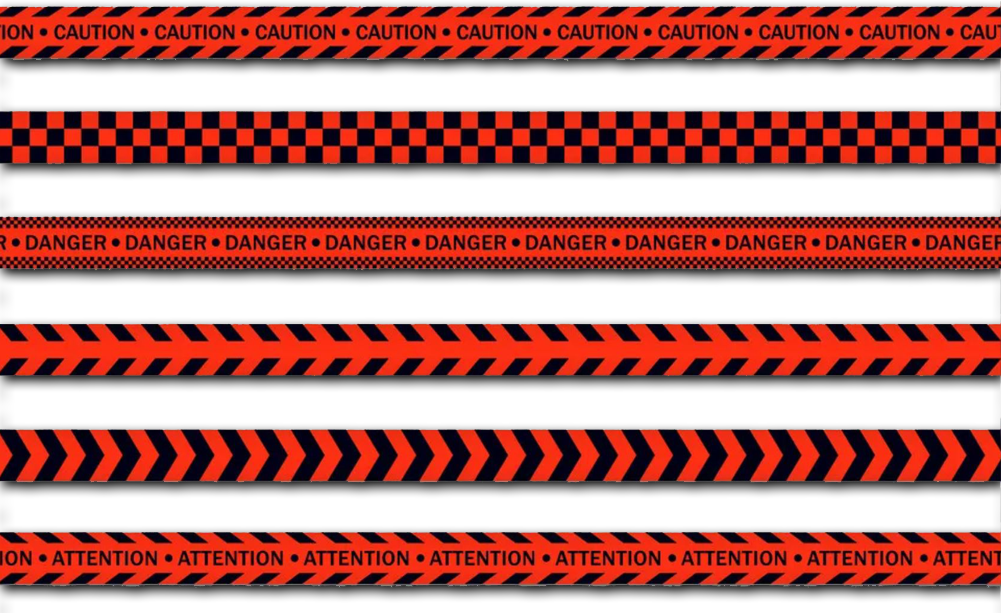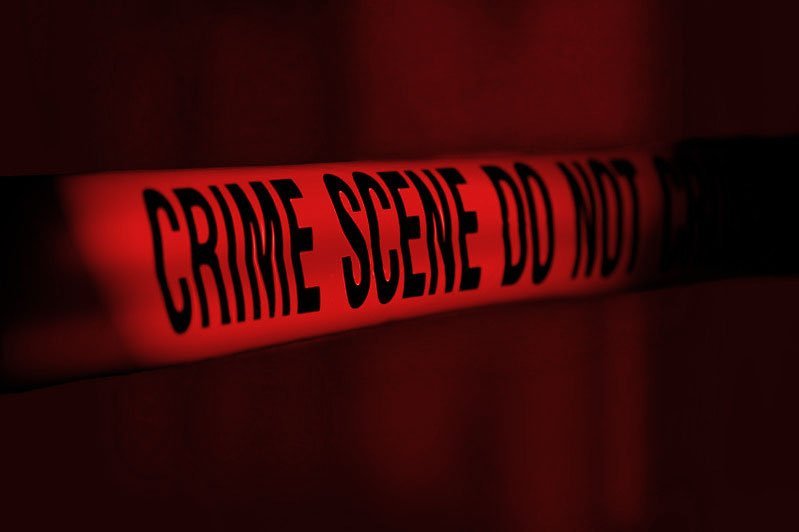What Does Red Police Tape Mean?
Red police tape, also known as "crime scene tape" or "caution tape," is used to mark off areas where a crime or accident has occurred and to warn people to stay away.
This tape signals that the area is a crime scene and that unauthorized access is prohibited.
The tape is put up by law enforcement officers and is meant to preserve evidence and maintain the integrity of the scene until it can be fully investigated.
By establishing a physical barrier, the red police tape helps to protect the crime scene and prevent contamination or alteration of any evidence that may be present.
Additional Meanings
In addition to its use in criminal investigations, red police tape can also be used in other emergency situations, such as hazardous material spills or natural disasters, to warn people to stay away from dangerous or contaminated areas.
In these cases, the tape may be used to establish a secure perimeter and prevent people from entering an area that could pose a threat to their health or safety.
The Red Tape Controversy
In some instances, the use of red police tape has become controversial, as it can be seen as an infringement on individual rights or as a way to stigmatize a neighborhood or community.
Critics argue that the tape can be used to spread fear and paranoia, and that it can create an unwelcoming environment for those who live or work in the area.
Despite these concerns, the red police tape remains a vital tool for law enforcement agencies, as it helps to ensure the proper collection and preservation of evidence, and provides a physical barrier to protect the crime scene from contamination or alteration.
Related Questions
-
Not necessarily.
The presence of red police tape does indicate that a crime or emergency situation has taken place, but it does not necessarily mean that someone has died. The tape is used to mark off a crime scene and prevent unauthorized access, regardless of the nature of the incident.
However, in many cases, the presence of red police tape can indicate that a serious or potentially deadly situation has taken place.
For example, the tape might be used to mark off the scene of a homicide, a fatal accident, or a hazardous material spill.
In these cases, the tape serves as a warning to the public to stay away, and it helps to preserve the crime scene and any evidence that may be present.
In conclusion, while the presence of red police tape does not necessarily mean that someone has died, it does indicate that a serious or potentially dangerous situation has taken place, and that access to the area is restricted.
-
Yellow police tape is typically used to mark off a more limited area than red police tape.
It is often used to mark off a specific section of a crime scene or to establish a perimeter around a smaller, more contained area within the crime scene.
The yellow tape serves a similar purpose to red tape, which is to restrict access to the area and preserve evidence, but the use of yellow tape is typically less serious than red tape and indicates a lower level of restriction or concern.
Yellow police tape is also used in a variety of other situations, such as road construction, crowd control, and natural disasters, to warn people of potential hazards and to establish a secure perimeter.
In conclusion, yellow police tape serves as a visual cue to warn people of a potentially hazardous or restricted area, and to restrict access to the area.
The use of yellow tape is typically less serious than red tape and indicates a lower level of restriction or concern.
-
Red police tape and yellow police tape serve similar purposes, which is to restrict access to a certain area and warn people of potential hazards.
However, there are differences between the two in terms of the level of restriction or concern they indicate.
Red police tape is typically used to mark off the scene of a serious crime, accident, or hazardous material spill, and it indicates a high level of restriction and concern.
The use of red tape is intended to prevent unauthorized access to the crime scene and to preserve evidence, and it serves as a warning to the public to stay away from the area.
Yellow police tape, on the other hand, is typically used to mark off a more limited area within a crime scene or to establish a perimeter around a smaller, more contained area.
It serves a similar purpose to red tape, which is to restrict access to the area and preserve evidence, but the use of yellow tape indicates a lower level of restriction or concern.
Yellow police tape is also used in a variety of other situations, such as road construction, crowd control, and natural disasters, to warn people of potential hazards and to establish a secure perimeter.
In conclusion, the main difference between red and yellow police tape is the level of restriction or concern they indicate.
Red tape is used in more serious or dangerous situations, while yellow tape is used in less serious or less hazardous situations, or to establish a more limited perimeter.
-
Red and white police tape is often used in combination to create a more visible and distinct barrier around a crime scene or other restricted area.
The red tape is used to clearly mark the boundaries of the area and to warn people to stay away, while the white tape provides additional contrast and makes the barrier even more noticeable.
By using both red and white tape, law enforcement agencies can create a highly visible barrier that is difficult to miss, even from a distance.
This helps to ensure that people are aware of the restricted area and to minimize the risk of unauthorized access.
In addition to being used at crime scenes, red and white police tape can also be used at natural disasters, road construction sites, and other situations where a secure perimeter is needed.
The use of red and white tape serves as a visual cue to warn people of the potential hazards and to keep them at a safe distance.
In conclusion, the use of red and white police tape is a common practice in law enforcement and emergency management.
By combining the two colors, agencies can create a highly visible and distinct barrier that helps to keep people safe and secure.
Who Can Cross Red Police Tape?
In addition to the warning color of the red tape, crime scene investigation units will place dedicated officers in charge of watching over areas sectioned off with red tape.
It is that officer's job to make sure that no one besides CSI members enters the area.
When the red police tape is in place, only authorized personnel, such as police officers, detectives, forensic specialists, and emergency responders, are allowed to enter the area.
The public is generally warned to stay back, as entering a crime scene could compromise the investigation and lead to criminal charges.
In some cases, the red tape may be accompanied by additional security measures, such as barricades, patrol cars, or officers on guard. The size and scope of the crime scene can vary, and the tape may be used to block off a small area, such as a single room, or a larger area, such as a building or an entire block.
Red police tape is also a reminder of the importance of preserving evidence and maintaining the integrity of crime scenes. It underscores the need for thorough investigations, as even small details can play a crucial role in solving a crime and bringing those responsible to justice.
Once the investigation is complete and the crime scene has been processed, the red police tape is typically removed, and the area is released back to its normal use. However, in some cases, the aftermath of a crime can leave a lasting impact on a community, and the memory of the event may linger for years to come.
Red Police Tape in Pop Culture
In popular culture, the sight of red police tape has become synonymous with crime scenes and investigations. It has been featured in countless movies, TV shows, and books, often serving as a visual cue that a serious or dangerous situation is unfolding.
The use of red police tape has evolved over the years, and new technologies, such as security cameras and drones, have been integrated into the investigative process. However, the red police tape remains a recognizable symbol of the work that law enforcement officers do to keep communities safe and bring justice to those who have been affected by crime.
Clear Communication
The use of red police tape is also an important reminder of the need for effective communication between law enforcement agencies and the public.
When a crime scene is marked off with red police tape, it can cause confusion, fear, and anxiety among those who live or work in the area.
In order to mitigate these negative effects, law enforcement agencies often provide updates and information to the public about what is happening, what steps are being taken to investigate the crime, and when the area will be cleared and returned to normal use.
Clear and timely communication helps to build trust between law enforcement and the community, and it is an essential component of effective policing. By providing information and answering questions, law enforcement agencies can help to ease concerns, reduce fear, and build a stronger relationship with the public.
Conclusion
In conclusion, the red police tape is a crucial tool for law enforcement agencies, and it serves as a reminder of the impact of crime on individuals and communities.
Whether used in criminal investigations, hazardous material spills, or other emergency situations, the red police tape helps to keep people safe and facilitate effective investigations.
At the same time, it is an important reminder of the need for effective communication between law enforcement and the public, as this helps to build trust, reduce fear, and foster stronger relationships between communities and the agencies that serve them.







Inside the Investigation: A Deeper Dive into Police Detective Benefits